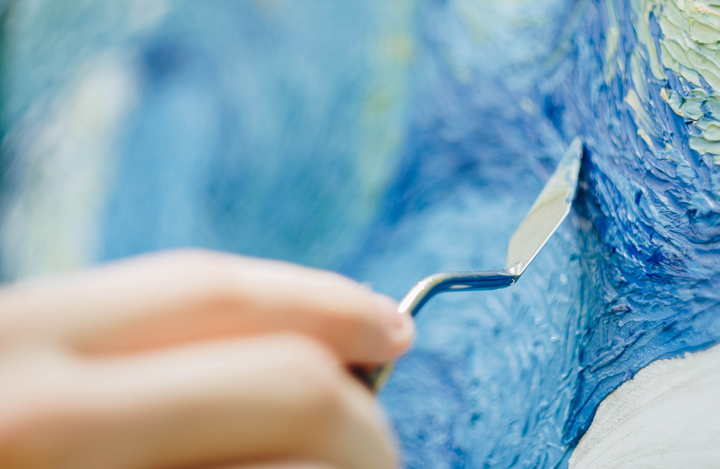As an artist, blue is an essential color. It’s one of the most common colors in the natural and man-made world and one of the most popular shades. And so, learning what colors make blue and how to mix it is a crucial skill any artist needs.
You’ll always use the color blue in your artwork, whether you’re painting the sky, sea, or something else. It features heavily in nature painting and other styles such as abstract art. So, you need to learn how to make blue paint without blue if you don’t have any to hand.
There will be times when you run out of blue paint. Or maybe you have a limited selection of colors and need to mix a specific shade. In that case, this article is for you! I’ll walk you through how to make blue paint with other colors.
Soon, you’ll have a much deeper understanding of the color blue. And you should be able to whip up almost any shade of blue using the available colors.
An Introduction to the Color Blue
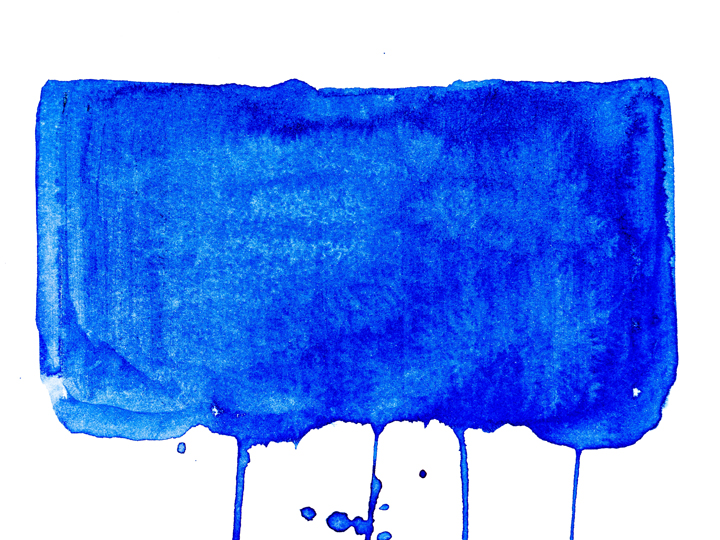
The color blue needs very little introduction. Right from kindergarten, we learn that blue is one of the three primary colors. And of course, the two others are yellow and red.
And you probably know that you can make almost any other color using these three shades. It becomes even easier when you factor in the secondary colors they create when mixed.
This knowledge allows you to mix your own colors when painting, if necessary. But when it comes to mixing one of the primary colors, it can get a bit more complicated.
And as we mentioned above, blue is one of the most common colors used by artists. So, you’ll need to paint with blue at one point or another.
Blue is also a versatile color, with many different variations. It’s the color of a deep blue sea or a pale early morning sky. It’s also the deep blue-black color of the twilight sky.
And the color blue has many different meanings, too. For example, it can seem calm and tranquil. So, it’s often used to create soothing atmospheres.
But it can also seem rich and deep, especially if you think of darker shades of blue. And in color psychology, blue is associated with bravery, wisdom, and spirituality.
However, blue can also be associated with sadness and loneliness. So, it depends on the context and how you use the color blue in your artwork. It can mean very different things and provoke a range of emotions.
As you can see, blue is a complex color. It’s even described as the most popular color in the world. So, it’s about time you learned what color mix makes blue!
How to Make Blue Paint with Other Colors
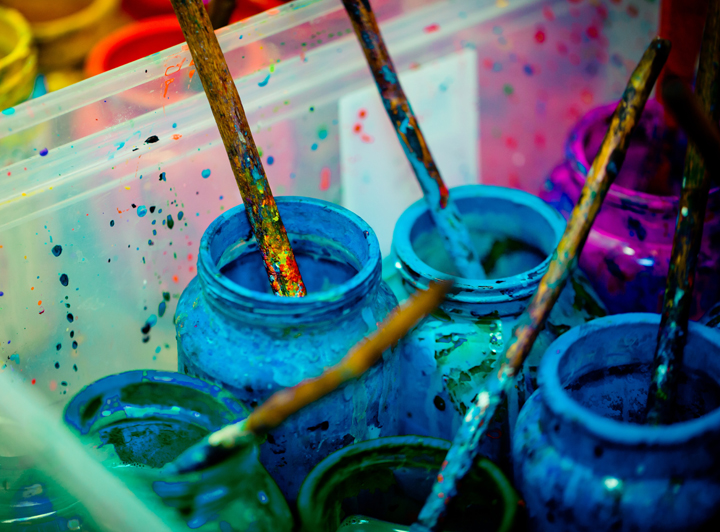
So, by now, you’re probably wondering – can you make blue using other colors? And how do you make blue by mixing colors if it’s a primary color in the first place?
You should find the answers to these questions in the next few sections. We’ll look at how you can mix the color blue using the colors available. And you’ll learn how to make various shades of blue, from light to dark, muted to bright.
However, remember that blue is one of the harder shades to mix. That’s because it’s a primary color, and as a result, harder to make than secondary and tertiary colors.
So, sometimes you will need a shade of blue to get you started. But with that shade and some other colors, you can create various blues. Let’s take a look at how to do it!
How to Mix Blue Paint
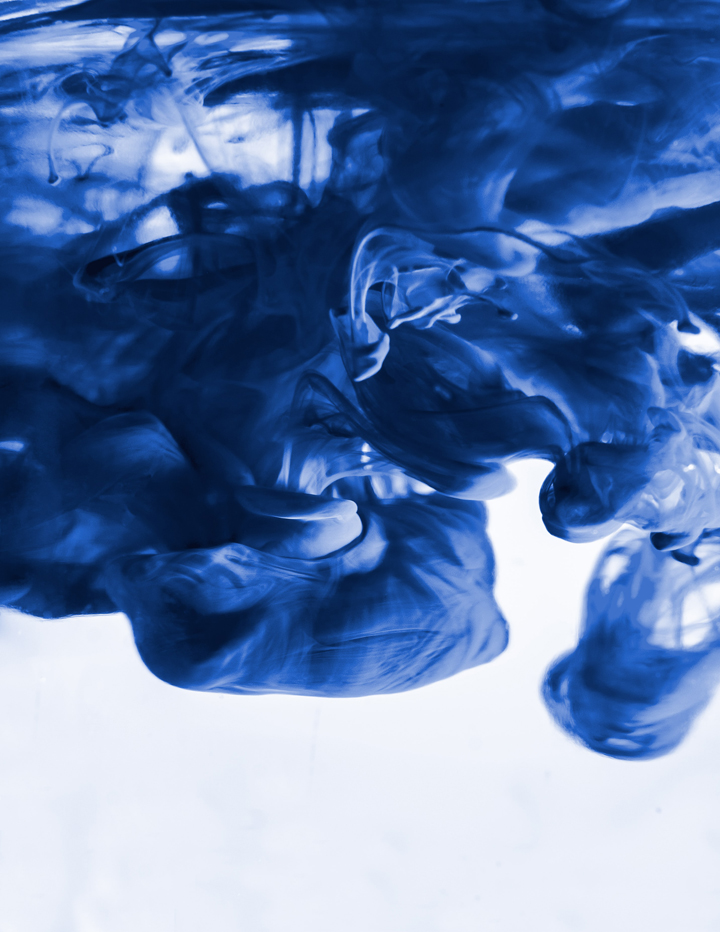
If you want to make your own blue paint, there is a basic formula you need to know. Once you’ve mastered this color combination, making blue paint from scratch is easy!
This method relies on using the CMYK color model. Printers commonly use it to produce a range of different, accurate colors. The CMYK model uses the colors cyan, magenta, yellow, and black to make almost any color imaginable. You can find out more about the CYMK vs. RBG color modes here.
For this, all you need is cyan and magenta paint. Cyan is a light, bright color that’s a mix of green and blue. Although some people might consider it a shade of blue, it’s a distinct color. It has equal amounts of green and blue and a very vibrant shade.
Magenta is another vivid, bright color. It’s a pinky-purple that can have reddish tones. Magenta can vary in shade, sometimes appearing more like a hot pink or deep purple.
The trick is to mix magenta and cyan together. I’d recommend you give it a try to see it with your own eyes. You’ll discover that these two colors create a shade of blue often known as true blue.
When you mix these two colors, you’ll need to be careful with your ratios. Generally, you’ll need more cyan than magenta. If you’re mixing paint, you can add a little bit as you go. Mix the two colors together well, and then add a bit more. You can keep doing this until you get your desired shade.
If you use more magenta, you’ll have a richer shade of blue, closer to purple. And if you use more cyan in the ratio, the color will appear cooler, with an undertone of green.
Once you’ve created true blue, your task is a lot easier. You can tweak the color by mixing in more white to lighten it or black to make it darker. But you could also add other shades to create a slightly different color.
Mixing colors is a lot of fun and will help you understand the science of art. So, don’t be afraid to get stuck in and experiment! While reading art books can be helpful, you can’t beat getting your hands dirty and experimenting. It’s the best way to learn and improve your skills.
What Colors Make Light Blue
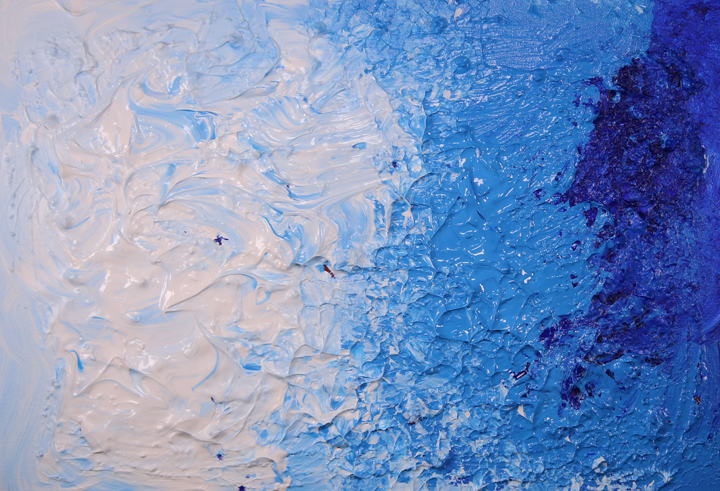
You can make lighter shades of blue by adding white to a darker shade. For example, if you mix cyan and magenta, you’ll get true blue. If you slowly mix in small amounts of white, you should get a nice shade of powder blue as a result.
But if you start with a shade of blue, you can mix in white to get a different shade very easily. For example, add white paint to ultramarine blue, and you’ll get a beautiful cornflower blue.
And if you want a bright shade of lighter blue, you can start with cobalt blue. Then, add a dash of white and mix until you get the desired result. Soon, you’ll have a lighter shade of blue that’s still fresh and vibrant.
Another way to create a lighter shade of blue is by adding gray to a dark blue. You’ll need to carefully pick the shade of gray – don’t go for anything too dark. Then, add it bit by bit to your paint until you get the desired color. Mixing dark blue and gray can make a beautiful cornflower blue.
The exact color you’ll get will depend on the shade of blue you use in the first place. So, if you start with royal blue, you’ll finish with a different shade than cobalt. And ultramarine would create yet another color combination. These small differences become more pronounced when you mix them with another color.
Finally, you might need to lighten your blue paint. But what do you do if you don’t have any white paint handy? Instead, you could choose a pale yellow or green. Add a drop at a time, mix well, and get a lighter blue. But bear in mind that using a cool green or yellow will make the blue color cooler, too.
How to Make Dark Blue Paint
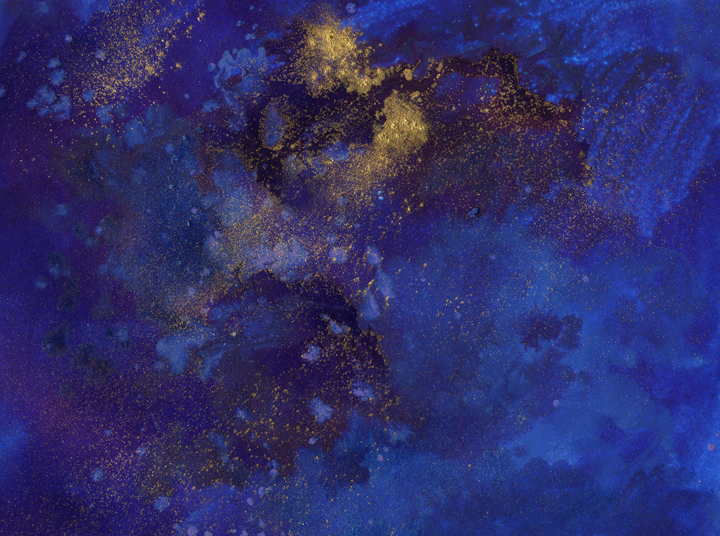
If you’re wondering what two colors make dark blue, then here’s your answer. In fact, you have a few different options for making a darker blue. And each one will result in a slightly different shade of blue, so you can pick the one that works best for you.
Firstly, you could mix red and blue to make a rich indigo shade. Technically, you might decide that this method doesn’t count, as it uses the color blue. And you could say that indigo is closer to purple than blue. (Although scientifically, it sits right between these two shades).
Use this method if you already have a lighter blue and want to darken the shade. All you need to do is all a little dioaxine purple and keep mixing until you get your desired shade. With this method, you should get a rich, deep blue. Depending on which blue you mix it with, it can look a little muted as dioaxine purple has red undertones.
Your next option is to add some burnt umber to make a dark blue. Burnt umber works particularly well with ultramarine blue or cobalt blue.
And the last way to make a dark blue involves adding two shades to your light blue color. For this method, you’ll need alizarin crimson and pthalo green. Mix these two colors together, and they look very like burnt umber. And so, when you add them to light or mid-blue, you create a much darker shade.
Warm vs. Cool Blues – An Introduction to Color Temperature
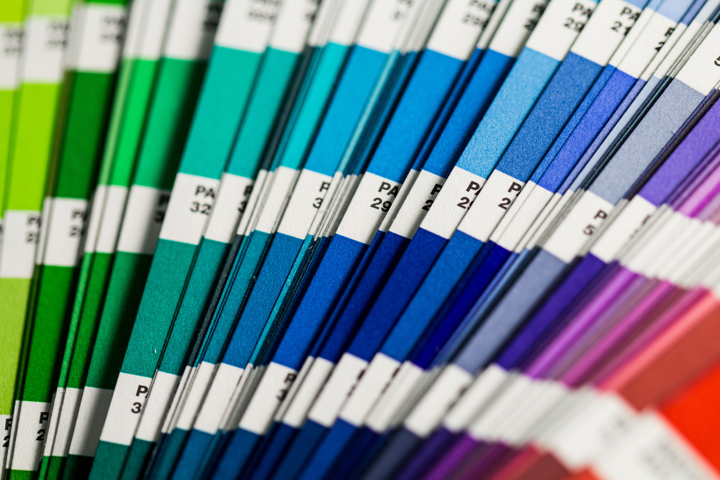
Color temperature is another important factor in color theory. Almost all colors can be divided into cooler or warmer shades. For example, red, yellow, and orange are normally considered warm colors. And in contrast, blue, green, and purple are often considered cooler colors.
But it can get more complicated than that! And that’s because any color can have shades that look either warmer or cooler.
For example, let’s take yellow. A rich, warm, saturated yellow with orange tones will be a warm color. But a bright, neon yellow can have much cooler tones, even if yellow is generally considered a cooler color.
And if you look at purple, you’ll start to see that some shades of purple are warmer while others are cooler. For example, plum is a warm purple shade with red undertones. In comparison, periwinkle is a much cooler shade with blue undertones.
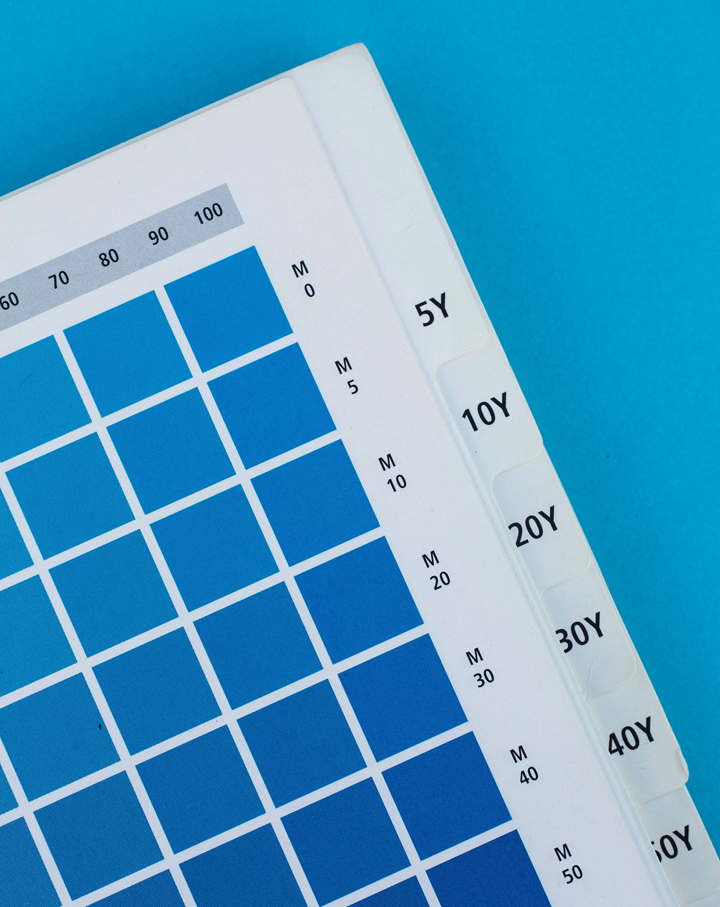
And the same goes for the color blue, too. So, by understanding color temperatures, you’ll have greater control of your artwork. As a result, you’ll find it easier to create the look you want and provoke a specific feeling in your audience.
There will be times when you want to make your blue paint look warmer or cooler. So, let’s find out how you can do that by mixing in other shades!
How to Make Warm Blue Shades
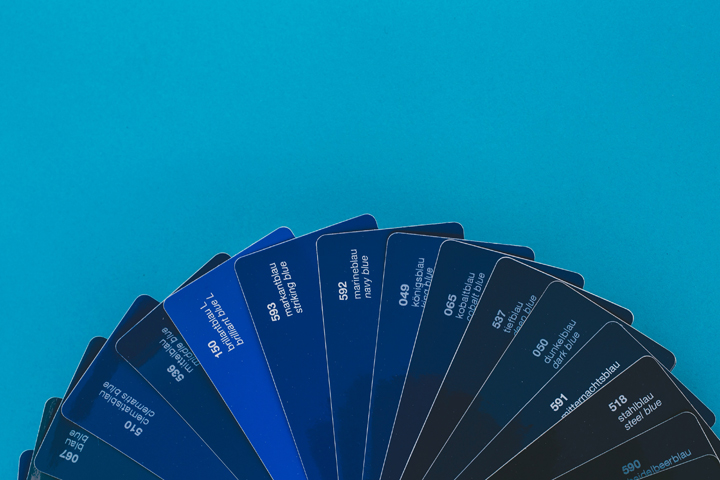
If you want to make a warm blue, you can add a warm red to your blue. Two of the best colors for this are alizarin crimson and burnt sienna.
But you’ll need to choose which one you use carefully. The result will differ depending on which one you go for and how much paint you add.
Another thing to consider is what shade of blue to mix it with in the first place. As you’ve seen, blue can vary a lot from cooler to warmer. I recommend picking a warm shade of blue to make your work easier. Ultramarine blue is a great color to use, as it’s one of the warmer blues available.
Burnt sienna is a rich, deep red with brownish tones. If you mix ultramarine blue and burnt sienna, you’ll get a warm, rich blue hue. As burnt sienna is quite a dark color, you’ll end up with quite a dark blue.
In contrast with burnt sienna, alizarin crimson is brighter and has purple undertones. That’s a good sign that it will mix well with blue, as it already has some blue in it.
When you mix ultramarine with alizarin crimson, the result should be a rich, deep blue with a tinge of purple.
An important note: You should avoid mixing yellowish-reds with blue. If you combine all three primary colors, you’ll get a murky brownish color. So, stick with red shades with purple undertones instead.
How to Make Cool Blue Shades
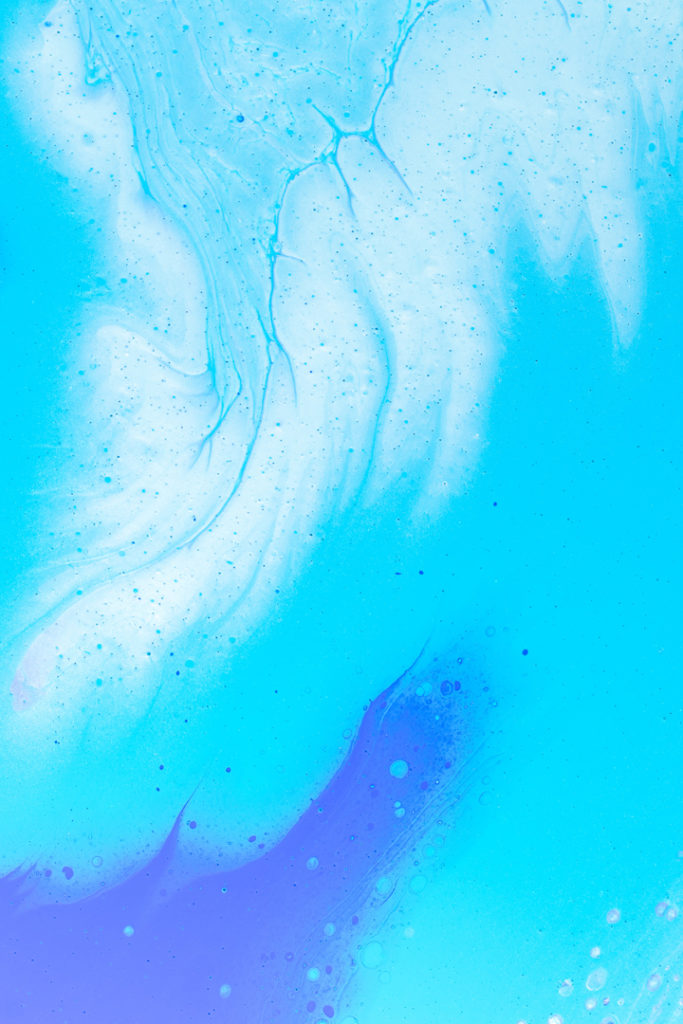
If you want to make your blue look cooler, adding green is the best and easiest way. But of course, you’ll need to choose a cooler shade of green to mix with your blue.
One color you can use is cadmium green. It’s a bright, light green with yellow undertones, so it’s perfect for cooling down your shade of blue.
Alternatively, you could mix Veronese green with your blue paint. It’s a lovely mid-green shade and slightly darker than cadmium green. So, if you want a mid-to-dark blue, Veronese green works well. It’s on the cool end of the spectrum but slightly warmer than cadmium green.
Now you know the basic theory, you can experiment with mixing colors to make cool and warm blues. First of all, you could try out these two colors and see whether you like the result. Then, you could move on and test out some different shades of cool green. You might find a color you prefer to use – but you’ll only know by testing it yourself!
How to Make Different Shades of Blue – A Technical Guide
I’ve covered how to make different shades of blue when mixing paint. But you might be wondering how to make blue on your computer. Maybe you need a specific color for graphic design, illustration, or video editing.
Here’s a detailed guide to making blue technically. It contains both the details of the RBG color mode and the CMYK color model. So, it’s quick and easy to find the information you need to mix the perfect shade of blue.
Make sure to bookmark this page so you can refer to it whenever you need to!
| Shade of Blue | Hex Code | RBG | CMYK | |
| Oxford Blue | #002147 | (0, 33, 71) | 100%, 53.5%, 0%, 72.2% | |
| Prussian Blue | #003153 | (0, 49, 83) | 100%, 41%, 0%, 67.5% | |
| Navy Blue | #000080 | (0, 0, 128) | 100%, 100%, 0%, 50% | |
| Cobalt Blue | #0047AB | (0, 71, 171) | 60%, 60%, 0%, 0% | |
| Cerulean Blue | #2A52BE | (42, 82, 190) | 98%, 10%, 0%, 20% | |
| Denim Blue | #1560BD | (21, 96, 189) | 61%, 33%, 0%,33% | |
| Turquoise | #40E0D0 | (64, 224, 208) | 71%, 0%, 7%, 12% | |
| Baby Blue | #89CFF0 | (137, 207, 240) | 42.9%, 13.8%, 0%, 5.9% | |
| Azure Blue | #007FFF | (0, 127, 255) | 100%, 50.2%, 0%, 0% |
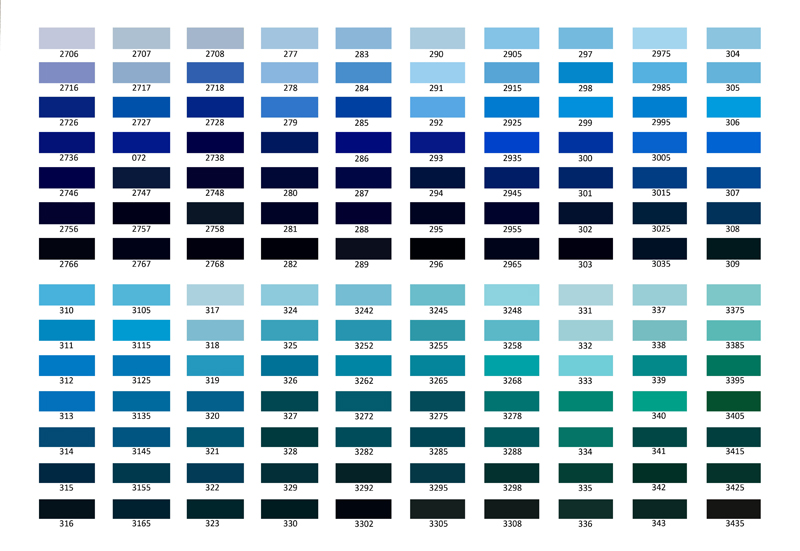
How to Make Blue Paint with Other Colors – FAQ
What two paints make blue?
If you need blue paint but don’t have any, you can create your own if you know what you’re doing. You can mix cyan and magenta to make a lovely shade of blue. But you might not be familiar with these colors, so let’s take one step back.
Cyan is a color that is often described as greeny-bluey. It has a lot of similarities with blue, but it couldn’t be described as true blue.
And magenta is a shade of purple, although it looks very pinky. Sometimes, it can even look reddish-purple or hot pink.
But when you mix these two colors together, you get an unexpected result. You’ll end up with a fantastic shade of blue.
Once you have your new shade of blue, you can experiment with it. You could add more white, black, gray, etc. It’s up to you to lighten or darken the shade, depending on what you want to paint.
Do yellow and green make blue?
It’s well-known that yellow and blue mixed together make green. But does that mean that yellow and green mixed make blue?
That sounds straightforward, but unfortunately, it’s not true. You’ll get a yellow-green shade when you mix yellow and green together. The exact color will vary depending on how much of each color you use.
Does red and green make blue?
You can’t make blue with red and green because it’s our primary color. Mixing red and green together will get a muddy brown or gray shade. The exact result will depend on which shades of red and green you use. At least, that’s true in subtractive color mixing used for traditional art such as painting.
Additive color mixing is the method used on computers and other technology. It involves combining different shades of light to get a specific color. And it works quite differently from regular subtractive color mixing. In additive color mixing, you’ll actually get yellow when you mix red and green.
What primary colors make blue?
Blue itself is one of the primary colors. And that means you can’t make blue with the remaining primary colors, red and yellow. You can lighten or alter an existing shade of blue by adding a little red or yellow. You can make the blue lighter, darker, warmer, or cool.
However, by combining two secondary colors, magenta and cyan, you can make blue. This method is described in detail above.
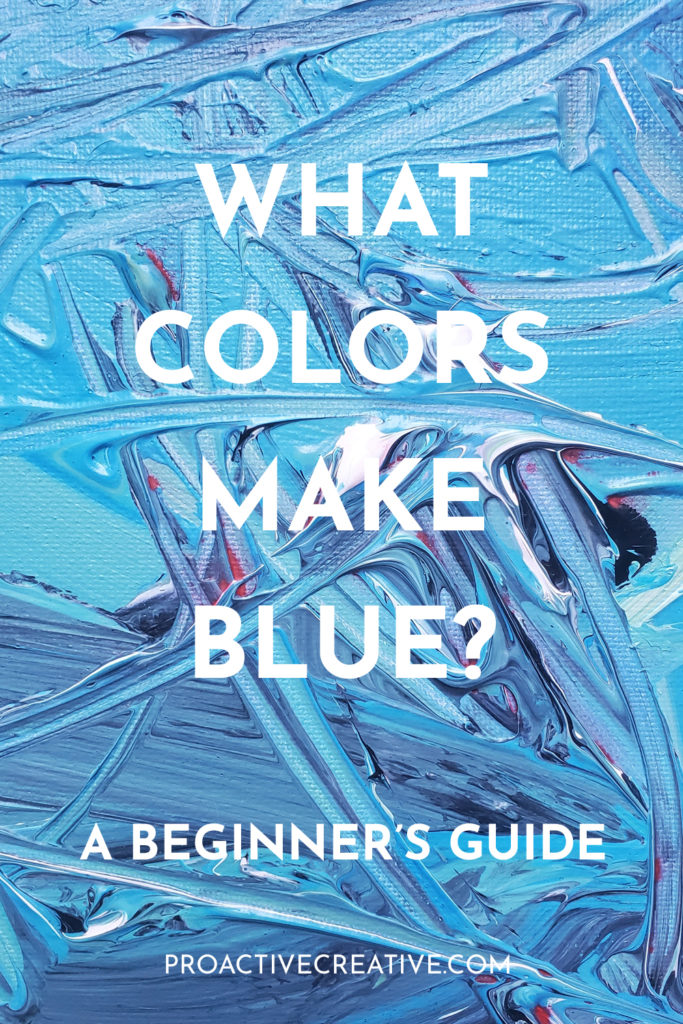
The Wrap Up
By now, you should be an expert on the color blue. So, you won’t need to worry about how to make blue paint if you ever run out again. And if anyone ever asks you, ‘how do you make blue,’ you’ll be able to pass on your knowledge.
As an artist, gaining a deeper understanding of how colors work will pay off. You’ll come to understand color science and psychology and have a better eye for color. Not to mention that you’ll always be able to make the exact shade you need for your painting!
Let me know if you have any questions about mixing the color blue in the comments below. And make sure to follow Proactive Creative on Pinterest for more useful resources. You’ll find handy tips, tutorials, and reviews for everyone here, from hobbyists to pros!

